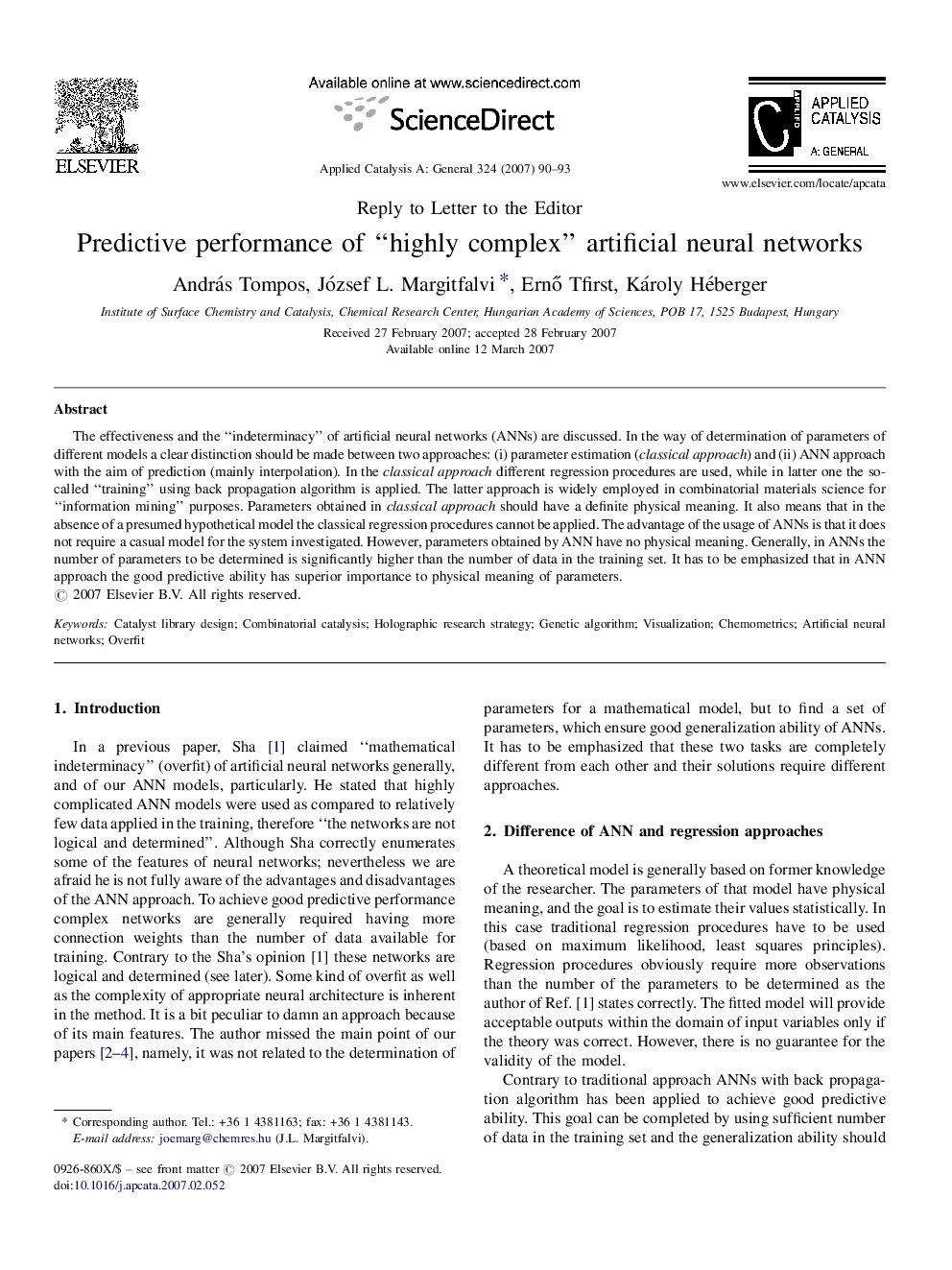| Article ID | Journal | Published Year | Pages | File Type |
|---|---|---|---|---|
| 44383 | Applied Catalysis A: General | 2007 | 4 Pages |
The effectiveness and the “indeterminacy” of artificial neural networks (ANNs) are discussed. In the way of determination of parameters of different models a clear distinction should be made between two approaches: (i) parameter estimation (classical approach) and (ii) ANN approach with the aim of prediction (mainly interpolation). In the classical approach different regression procedures are used, while in latter one the so-called “training” using back propagation algorithm is applied. The latter approach is widely employed in combinatorial materials science for “information mining” purposes. Parameters obtained in classical approach should have a definite physical meaning. It also means that in the absence of a presumed hypothetical model the classical regression procedures cannot be applied. The advantage of the usage of ANNs is that it does not require a casual model for the system investigated. However, parameters obtained by ANN have no physical meaning. Generally, in ANNs the number of parameters to be determined is significantly higher than the number of data in the training set. It has to be emphasized that in ANN approach the good predictive ability has superior importance to physical meaning of parameters.
